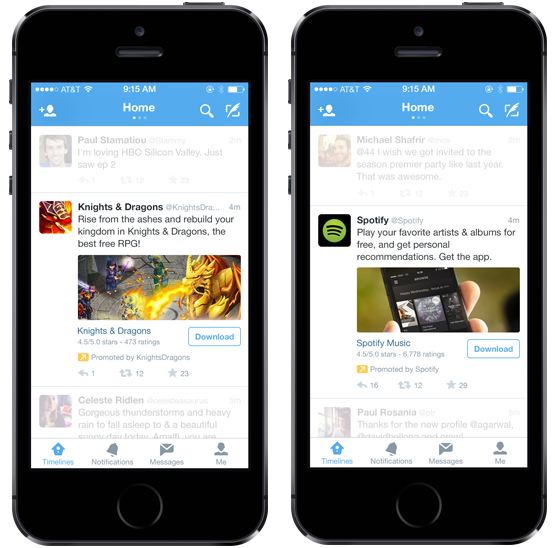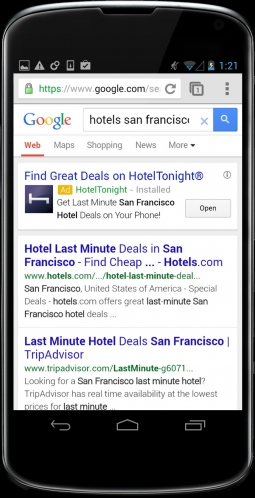The original version of the material can be found on Mobile Dev Memo, a website dedicated to the mobile industry, run by Eric Seferth himself, author of the book Freemium Economics.

We present an article about mobile advertising formats written by our colleagues from the Unilead Network, an international CPA platform and digital agency for mobile and Internet advertising, based on the publication of Eric Seufert, head of marketing at Wooga.
Mobile advertising began to be called the gold rush of our century, and the largest developers of mobile games – the sharks of this business, who go out of their way to become the happy owners of a “heavier bullion”. The most “toothy” players of the new market spend huge budgets on promoting their products and do not plan to slow down. For example, King invested almost $400 million in marketing in 2013.
The demand for an unlimited variety of mobile advertising is so great that, even with an indomitable desire for global leadership, Facebook would not be able to satisfy it in any acceptable volume. The absence of tangible limitations in development encourages more and more companies to claim a share of the live, growing market, starting new wars for promising channels and limitless opportunities for promoting applications. Therefore, today a place in the sun is provided for almost everyone who is not blind and sees prospects.
The diversity of players implies healthy competition. And competition entails both reasonable prices and innovative ways of promotion. If yesterday mobile advertising seemed like an adventure with illusory chances of success, today every advertising campaign is seen as an experiment. New tools allow you to follow every moment of the ongoing campaign with enviable scrupulousness, measure every action or inaction caused by the weight of the “pros” or “cons” of continuing life in the mobile world. But how do you manage to make fewer mistakes and be on the way to the top of the business?
Below are several modern formats for promoting mobile applications on the mobile web.
Contextual mobile advertising
Contextual mobile advertising – adapted contextual advertising messages displayed on a mobile device.
A format that is rapidly developing in the mobile advertising industry. Search results on request are carried out in accordance with contextual indicators, taking into account user actions, search conditions, semantic settings, etc.
One of the most promising companies in this segment is Xyo. The developer launched its first contextual campaigns at the end of last year and signed a contract with Deutsche Telekom. In the context of an application search query, the service from Xyo analyzes the user’s keywords, taking into account the application already installed on his mobile device and offering the most personalized software.
Today there are three main players in the contextual mobile advertising market in Russia:
1. Yandex Direct;
2. Google Adwords;
3. Rambler Begun;
At the same time, the most convenient system is Rambler Begin, thanks to the possibility of placing advertisements in several of the most popular search engines at once, as well as on tens of thousands of sites, the possibility of automatic and manual configuration of the advertising campaign and the possibility of placement not only by keywords, but also by groups of consumer interests of users.
Features of contextual mobile advertising:
1. Time matters. As a rule, mobile Internet users satisfy the momentary demand for goods and services by using search applications. While it is difficult to imagine a situation in which a subscriber will search for an expensive car or luxury housing with the help of a mobile device in order to make a transaction on the same day.
Another feature is the disproportionate distribution of the time of active requests. As a rule, in mobile contextual advertising, peaks occur in the morning and evening.
2. Geography decides the rest. Most of the requests on the mobile Internet are linked to a specific point or place on the map. Most often, users are not looking for an abstract restaurant, but the closest one in relation to their momentary location.
3. “Get me right.” Most often, queries in a mobile context are very concise. This is primarily due to the inconvenience of entering information using small screens and inconvenient keyboards.
Advantages:
1. Contextual mobile advertising is aimed at increasing clicks and conversion rate by increasing the relevance of the display of ads;
2. This advertising format is unobtrusive for the user.
Cons:
1. Advertising of specific and niche applications is not suitable for this type of mobile advertising.
Mobile display advertising
Display mobile advertising – adapted graphic advertising messages displayed on a mobile device.
The locations of mobile display advertising can be:
1. Mobile versions of websites;
2. Applications
The goals that the mobile display advertising channel solves:
1. Increasing site traffic;
2. Mobile App promotion;
3. Lead generation (receiving applications, questionnaires, surveys, etc.);
4. Increasing brand awareness/promoting a new product
Banner formats in mobile display advertising:
1. Standard;
2. Drop-down;
3. Interstitial;
4. Video
The most popular formats among advertisers are standard and drop-down. Certain media advertising ad formats are designed to solve specific goals.
Advantages:
1. A huge audience. Today, mobile advertising networks in Russia can be listed on the fingers of one hand. But already today, with their help, an advertising block can be seen by 2.5 to 40 million mobile device users per month.
2. Low price. So far, the price for this kind of placement is incomparably lower than other channels. When paying for clicks, the price can vary from 1 to 10 rubles per click. When paying for 1000 impressions, the price varies within 1000 rubles.
3. A new audience. Sometimes it seems to application developers that some groups of users will not be interested in the product under any circumstances. And therefore, it seems impractical to offer them to install the application on popular resources. An advertising campaign in a mobile advertising network is able to find the right audience on any resource.
Cons:
1. Fraud. Unfortunately, the percentage of fraud in domestic grids, according to unofficial data, can reach 40%. That is, half of the budget of the Republic of Kazakhstan will be wasted.
2. From a cannon on sparrows. Showing ads to a large audience involves huge risks. Yes, prices in the world of mobile display advertising are still low, but it is almost impossible to achieve efficiency without a test period. And test periods can last several months, which eats up advertising budgets.
3. Not just the WEB. The mobile display advertising market lives and plays by its own rules. Therefore, the media advertising campaign must be constantly kept under control, otherwise all the money can disappear in just a minute. And the efficiency of such placement will be equal or close to zero.
Native advertising
Native advertising provides developers with the ability to easily integrate ad blocks with the content of their applications – this usually happens through the placement of icons and a brief description of the advertised application, without violating the user comfort zone. Native advertising is sold today using CPA and CPC models .
Conversion counters are responsible for the effectiveness of advertising processes. Moreover, even today there are unified integrators of advertising directly into applications. Most recently, Appsfire has introduced three native advertising products – Sashimi, Ura Maki, and Brichter-San, with which developers can effortlessly integrate ad blocks directly into the application content.

Advantages:
1. The placement and timing of advertising campaigns are controlled by the application developer;
2. Native advertising gives developers full control over all the creatives of advertising campaigns.
Cons:
The design of our own advertising solutions is still poor
As mentioned above, mobile advertising has already become a battlefield of big players. For the last word in the field of technology, the market is forced to look up to the leaders. Therefore, at the end of the article, two progressive technologies for displaying mobile ads from Twitter and Google are described.
Twitter
On April 17, Twitter announced the launch of its own advertising network, which allows you to publish advertising tweets with links to mobile applications. The basis for this technology was the large mobile advertising network MoPub, bought by Twitter last fall. Thanks to it, ads can be shown not only to users of the social network, but also to users of all resources included in MoPub. The service has already managed to create success stories (for example, the promotion of the TwoDots game), and just a couple of weeks ago, at the White Nights: Mobile Games Conference, John Egan, vice president of MoPub, talked about further plans for the development of the platform.

Advantages:
The appearance of ads on Twitter will not be able to catch users by surprise, since the format of a mobile ad resembles the classic format of a sponsored tweet.
Minuses:
Targeting the target audience can be difficult, given the behavior of users. As a rule, fans of short messages do not enter their personal data and all socio-demographic information about users is collected from their tweets.
AdWords
At the end of April, Google announced a new Adwords feature. Now, AdWords mobile platforms provide full support for mobile app ads. The innovation of AdWords is its ability to avoid hyperlinks and retargeting, taking into account user intentions. As an example of the ad block format, Google cites the HotelTonight application. When you enter “Hotels in San Francisco” in the search query and the HotelTonight application is installed, the ranking of queries will give HotelTonight among the first in the search results. When clicking on the link, the user will see the results of the query “Hotels in San Francisco” already inside the installed application.

Advantages:
Ad impressions based on user intentions and retargeting are likely to convert better, equally well for both primary and repeat installations.
Cons:
Such advertising works worse for games and entertainment applications.
